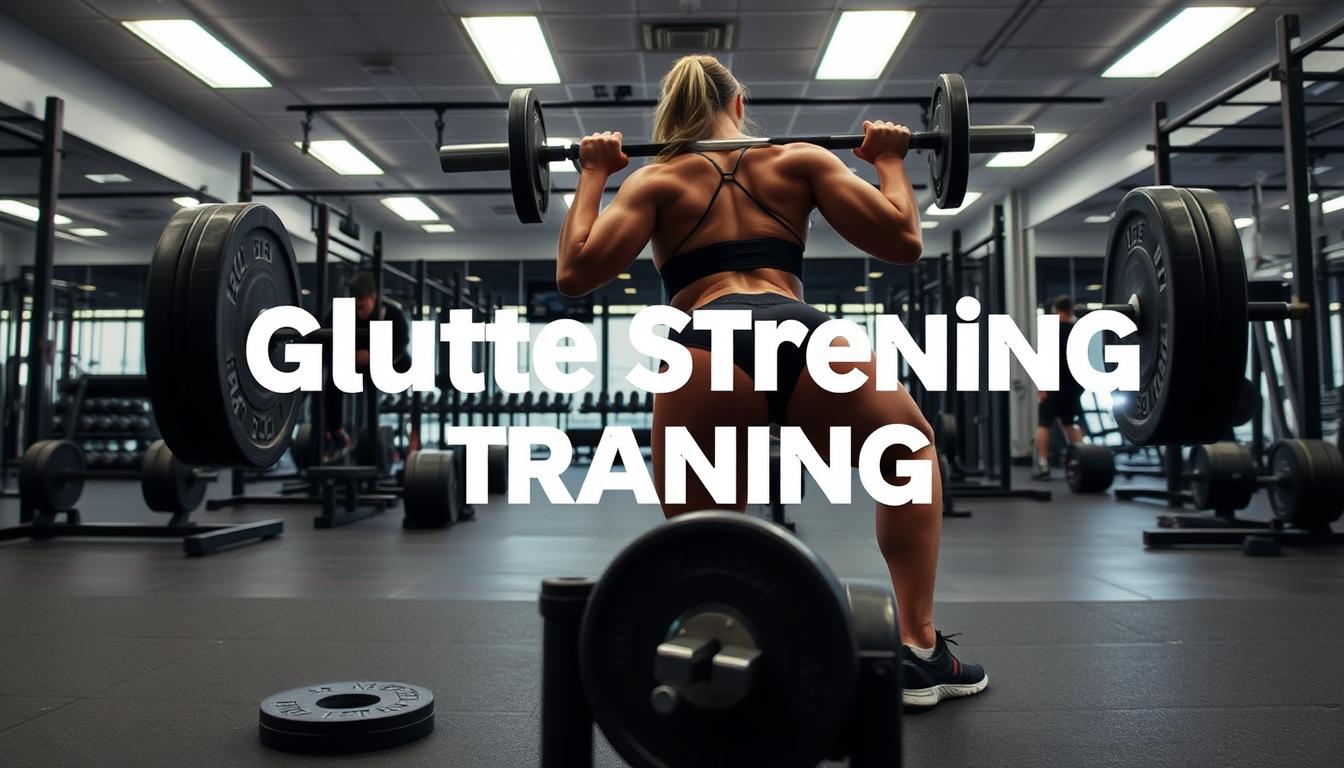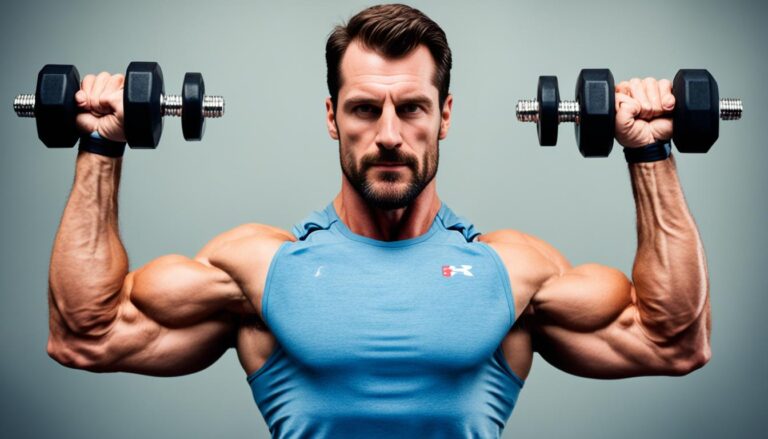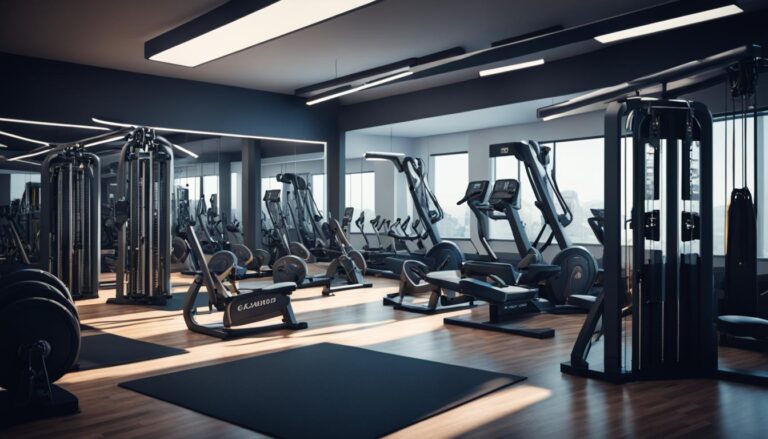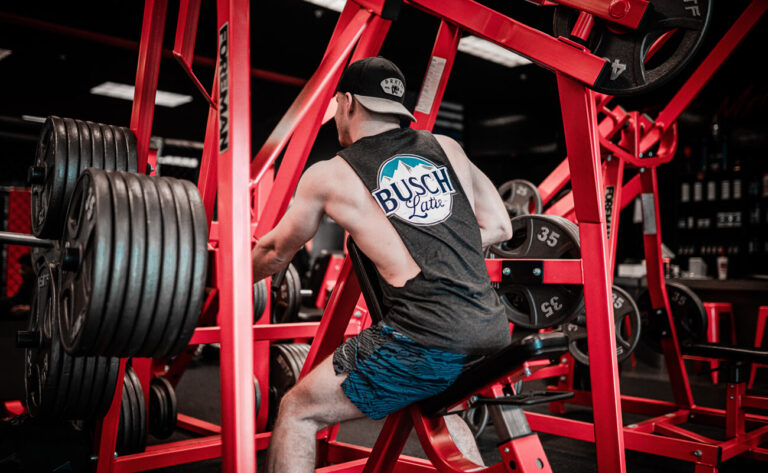Incorporating glute training with barbells into your fitness routine is essential for building a firmer and more sculpted booty. Barbell exercises are particularly effective because they allow for progressive overload, which is crucial for muscle development. By gradually increasing the weight, you can consistently challenge your glutes, leading to significant improvements in lower body strength and overall muscle tone.
Whether you’re a beginner looking to start your booty-building workouts or an experienced athlete aiming to add new challenges to your regimen, barbell workouts offer a variety of exercises to engage your glutes. From glute bridges and hip thrusts to squats and deadlifts, each movement targets different parts of the glute muscles, ensuring a comprehensive and effective workout.
For those seeking more insights on optimizing their workout routines, including exercises for other muscle groups, be sure to check out this detailed guide on cable workouts for lats.
Key Takeaways
- Glute training with barbells is vital for a firmer booty and enhanced lower body strength.
- Progressive overload is essential for muscle development and can be achieved through barbell exercises.
- Barbell workouts offer various exercises to target different parts of the glutes.
- Beginners and seasoned athletes can benefit from integrating these exercises into their booty-building workouts.
- For comprehensive fitness improvements, consider incorporating both barbell and cable machine workouts.
Introduction to Barbell Workouts for Glutes
Barbell workouts have gained immense popularity due to their effectiveness in targeting the lower body, especially the glutes. By introducing barbell exercises into your fitness routine, you can tap into the powerful potential of these major muscles to enhance both strength and aesthetics.
The glute muscles are comprised of three primary components: the gluteus maximus, gluteus medius, and gluteus minimus. These muscles play a crucial role in various functions such as hip extension, abduction, and internal rotation. Developing a robust glute region not only improves your overall fitness but also contributes significantly to better posture, reduced injury risk, and enhanced athletic performance.
When I began my starting barbell glute routine, I discovered that establishing a solid foundation was key. Knowing the anatomy and function of the glute muscles allowed me to tailor specific barbell exercises that maximized efficiency and effectiveness. Having this understanding is crucial for anyone serious about their glute workout foundations.
In the upcoming sections, we will delve into detailed instructions for various barbell exercises tailored to optimizing glute development. By implementing these exercises with proper technique and consistency, you’ll be well on your way to achieving a stronger and more sculpted lower body.
Benefits of Barbell Workouts for Glutes
Barbell workouts offer a multitude of advantages for those aiming to enhance the strength and appearance of their glutes. By integrating these exercises into your fitness routine, you can unleash the full potential of your posterior muscles.
Improved Strength and Power
One of the primary glute strength benefits associated with barbell workouts is the marked improvement in both strength and power. These exercises are particularly effective at engaging the larger muscle fibers within the glutes, leading to significant gains in overall muscle mass. Enhanced glute strength translates to better performance in various athletic activities, such as running, jumping, and lifting.
Moreover, functional movements in everyday life, such as climbing stairs or carrying heavy objects, become easier and more efficient with stronger glutes. This improvement stems from the increased power generated by the muscles, contributing to better overall physical health and endurance.
Enhanced Muscle Activation
Another crucial benefit of barbell workouts is their ability to maximize muscle activation. When compared to bodyweight exercises, barbell routines can significantly amplify the activating glute muscles. This heightened activation results in more thorough and rapid muscle development. For instance, studies have shown that performing glute bridges or hip thrusts with a barbell target the glute muscles more effectively than simple bodyweight variations.
Maximizing workout results is critical for those seeking noticeable improvements in muscle tone and strength. By employing barbell exercises, individuals can ensure that their workouts are both efficient and effective, leading to quicker and more pronounced gains.
Glute Bridges with Barbell
Mastering the barbell glute bridge technique is crucial for building a powerful posterior. This exercise not only strengthens your glutes but also engages your lower back and core, offering a comprehensive lower body workout.
How to Perform Glute Bridges with Barbell
To execute the perfect glute bridge with a barbell, follow these detailed steps:
- Set Up: Start by lying flat on your back with your knees bent and feet planted firmly on the ground, hip-width apart. Place a barbell across your hips, ensuring it rests comfortably without causing discomfort.
- Initial Position: Engage your core and gently tilt your pelvis to flatten your lower back against the floor. This creates a strong foundation for lifting the barbell.
- Execution: Push through your heels and lift your hips towards the ceiling, squeezing your glutes at the top of the movement. Your body should form a straight line from your shoulders to your knees.
- Controlled Descent: Lower your hips back down in a controlled manner, ensuring you do not arch your lower back upon returning to the starting position. Repeat for the desired number of repetitions.
For those beginning their fitness journey, start with a lighter weight to perfect the form and avoid injury.
Common Mistakes to Avoid
Avoiding injury during glute bridges with a barbell is paramount. The following are common mistakes and tips for perfecting glute exercises:
- Overarching the Lower Back: Ensure your back remains flat throughout the movement by engaging your core. Avoid excessive arching, which can lead to discomfort and injury.
- Improper Foot Placement: Positioning your feet too far from or too close to your glutes can lessen the effectiveness of the exercise. Aim for a hip-width stance with feet planted firmly on the ground.
- Rapid Movements: Perform the exercise with slow, controlled movements. This helps in fully engaging the glutes and reducing the risk of straining other muscles.
- Neglecting the Squeeze: A common error is not fully activating the glutes at the peak of the bridge. Ensure you consciously squeeze your glutes at the top of each repetition.
Gradually increase the weight as you gain strength to continually challenge your muscles and advance your fitness goals.
Barbell Hip Thrusts for Bigger Glutes
Maximizing glute size is a common goal for many fitness enthusiasts, and rightly so. One of the most effective methods involves barbell hip thrust techniques. This exercise specifically targets the gluteus maximus, the largest muscle in the glute group, which is essential for achieving a fuller, rounder booty.
- Start seated on the ground with a bench directly behind you.
- Roll a loaded barbell into the crease of your hips.
- Lean back onto the bench so that your shoulder blades are near the top of it.
- Drive through your heels to lift the barbell, ensuring your back stays straight.
- Squeeze your glutes at the top of the movement and hold briefly before lowering back down.
Adhering to these hip thrust techniques promotes effective muscle activation, necessary for maximizing glute size. The hip thrust primarily works on the gluteus maximus but also engages the hamstrings and lower back, making it a compound exercise. By incorporating barbell workout progressions, you can progressively overload these muscles to stimulate continuous growth and strength development.
Monitoring your barbell workout progressions is crucial for long-term success. Progressive overload can be achieved by gradually increasing the barbell weight, performing additional repetitions, or incorporating resistance bands. Keeping consistent track of these variables ensures that the muscles are always challenged and prevents plateaus.
To help you visualize your progress and maintain a structured workout regimen, here is a sample progression table:
| Week | Weight (lbs) | Repetitions | Sets |
|---|---|---|---|
| 1 | 100 | 10 | 3 |
| 2 | 110 | 10 | 3 |
| 3 | 120 | 8 | 3 |
| 4 | 130 | 8 | 3 |
| 5 | 140 | 8 | 4 |
| 6 | 150 | 6 | 4 |
Barbell Squats for Glutes: Technique and Tips
Barbell squats are a fundamental exercise for anyone looking to enhance their glute strength and overall form. Let’s delve into the right techniques and variations that can elevate your workout routine.
Proper Squatting Form
When squatting for glute development, it’s crucial to maintain the correct form and safety practices. Start by positioning the barbell comfortably on your shoulders, ensuring your feet are hip-width apart. Engage your core and slowly bend your knees, lowering your body as if sitting into a chair. Ensure that your knees stay in line with your toes and avoid letting them cave inward. Descend until your thighs are parallel to the ground, then press through your heels to stand back up.
Variations for Enhancing Glutes
Incorporating different barbell squat variations can target your glutes more effectively. Here are a few worth trying:
- Sumo Squats: Position your feet wider than shoulder-width, with toes pointing outward. This variation places more emphasis on glute engagement.
- Pause Squats: Lower into a squat and hold the position for a few seconds before rising. This increases time under tension, enhancing muscle activation.
For more insights into these variations and their benefits, you can explore detailed information and expert tips on performing barbell squats here.
Essential Barbell Glute Kickbacks
Incorporating barbell glute exercises such as glute kickbacks is essential for anyone looking to enhance their lower body workouts. The kickback technique, when done correctly, can significantly improve glute strength and aesthetics.

The technique for executing glute kickbacks with a barbell involves precise body positioning and controlled movement dynamics:
- Start by positioning the barbell behind your knees, holding it steady.
- Maintain a bent knee stance while keeping your back straight.
- Execute the kickback technique by driving one leg back while engaging your glutes.
- Return to the starting position and repeat on the other side.
Performing these barbell glute exercises consistently will provide multiple benefits:
- Enhanced glute muscle activation and definition.
- Improved lower body strength and stabilization.
- Better overall aesthetics and posture.
It’s crucial to incorporate these kickbacks into your routine strategically. Consider starting with fewer repetitions and gradually increasing as your form and strength improve. This measured approach ensures safe and effective enhancement of your lower body workouts.
| Exercise | Primary Benefit | Repetitions |
|---|---|---|
| Barbell Glute Kickbacks | Glute Activation | 10-15 each leg |
| Glute Bridges | Glute Strength | 12-20 |
| Barbell Hip Thrusts | Glute Size | 8-12 |
Barbell Good Mornings for Glute Strength
Barbell good mornings are a powerful exercise for enhancing lower body and posterior chain strength, particularly targeting the glutes. These glute strength exercises are essential for anyone looking to develop a well-rounded and powerful posterior. By incorporating barbell good mornings into your routine, you can effectively improve your glute muscles, hamstrings, and lower back.
Step-by-Step Execution
Maintaining form is crucial when performing barbell good mornings to avoid injury and ensure maximum effectiveness. Here’s a detailed guide:
- Start Position: Stand with feet shoulder-width apart and hold the barbell across your shoulders, not your neck. Engage your core.
- Descent: Keeping a slight bend in your knees, hinge at your hips, pushing your glutes back. Your torso should be parallel to the ground, maintaining a neutral spine.
- Ascent: Engage your glutes and hamstrings as you return to the starting position, ensuring you maintain form throughout the movement.
For additional resistance training targeting the biceps, triceps, and forearms, check out this article on cable workouts.
Safety Precautions
While barbell good mornings are highly effective, it’s important to be mindful of safety. Here are some precautions to consider:
- Weight Management: Start with a lighter weight to master the technique before progressing to heavier loads.
- Back Position: Maintain a neutral spine throughout the exercise to avoid lower back strain.
- Proper Warm-Up: Ensure your muscles are adequately warmed up with dynamic stretches and lighter sets to prevent injuries.
Integrating barbell good mornings into your glute strength exercises routine can significantly enhance your posterior development, provided that maintaining form is consistently prioritized.
Barbell Lunges for Glutes: A Comprehensive Guide
Incorporating barbell lunges into your workout routine can significantly enhance glute development. Let’s explore the benefits and the proper form to maximize your results.
Benefits of Barbell Lunges
Barbell lunges are fantastic for targeting the glutes. They promote unilateral training, ensuring each leg works independently. This not only builds muscle but also aids in correcting muscular imbalances. Using barbell lunges, you can achieve a more symmetrical and toned lower body.
Additionally, these glute-targeting lunges activate multiple muscle groups. You engage your quads, hamstrings, and core with each lunge, which enhances overall stability and strength. Moreover, barbell lunges can improve balance and coordination, essential for functional movements in everyday life.
Proper Form and Technique
Optimizing lunge form is crucial to prevent injuries and ensure effective glute engagement. Follow these steps for barbell lunges:
- Start Position: Position the barbell across your upper back, not your neck. Stand with feet shoulder-width apart.
- Step Forward: Take a large step forward with your right foot, ensuring your right knee is directly above your right ankle.
- Lower Your Body: Lower your body until your right thigh is parallel to the ground and your left knee nearly touches the floor.
- Push Back: Push off with your right foot to return to the starting position. Repeat on the other side.
To make sure you are optimizing lunge form, keep your torso upright and avoid leaning forward. This allows for maximum glute activation. Variations such as walking lunges or reverse lunges can add diversity and target different aspects of the glutes.
Avoid common mistakes like letting your knee pass your toes or placing the barbell too high on your neck. By maintaining proper technique, you will effectively perform barbell lunges, contributing to stronger and more sculpted glutes.
Barbell Deadlifts for Glutes
When it comes to mastering the deadlift, the barbell deadlift is an unparalleled exercise in a comprehensive glute workout regimen. Its ability to engage multiple muscle groups makes it a staple for strengthening glute muscles while promoting overall muscle development.
One of the most effective deadlift variations for glutes is the Romanian deadlift. This variation emphasizes the stretch and contraction of the glutes, providing a deeper and more concentrated engagement of these muscles compared to conventional deadlifts. Incorporating Romanian deadlifts into your routine can yield significant gains in glute strength and size.
Here are some key tips for proper execution to ensure you are maximizing the benefits and minimizing the risk of injury:
- Maintain a neutral spine by keeping your back straight throughout the lift.
- Engage your core to stabilize your body and protect your lower back.
- Focus on pushing your hips back rather than bending at the waist to initiate the movement.
- Keep the barbell close to your shins and thighs to maintain balance and control.
- Complete each rep with a deliberate squeeze of the glutes at the top of the movement.
Tailoring the barbell deadlift to individual fitness levels and goals is essential. Whether you are a beginner or an advanced lifter, adjusting the weight and volume of your lifts can help you progress safely and effectively.

Here’s a comparative look at different deadlift variations and their specific glute activation levels:
| Deadlift Variation | Glute Activation | Recommended For |
|---|---|---|
| Romanian Deadlift | High | Glute Hypertrophy |
| Conventional Deadlift | Moderate | Overall Strength |
| Sumo Deadlift | High | Improve Hip Strength |
Incorporating Compound Glute Exercises with Barbell
Compound movements for glutes are highly effective due to their ability to engage multiple muscle groups simultaneously, resulting in more comprehensive muscle activation and improved overall workout efficiency. By combining various barbell exercises, you can create dynamic routines that maximize glute workouts, promoting both strength and growth.
In my experience, integrating compound movements can dramatically enhance the effectiveness of glute training by incorporating diverse muscle groups into a single, powerful movement.
One effective method for maximizing glute workouts is to employ barbell exercise combinations. Here are some highly recommended compound exercises that can be seamlessly integrated into your routine:
- Barbell Squats and Deadlifts: This classic combination targets not only the glutes but also the quadriceps, hamstrings, and lower back, making it a fundamental part of any glute-focused workout.
- Glute Bridges and Hip Thrusts: When executed with a barbell, these movements are exceptional for isolating the glutes, providing a concentrated workout to maximize muscle activation.
- Barbell Lunges and Good Mornings: Combining these two exercises ensures a balanced approach, targeting the glutes from multiple angles and enhancing overall lower body strength.
For example, a comprehensive routine incorporating these compound movements might look like this:
| Exercise | Sets | Reps |
|---|---|---|
| Barbell Squats | 4 | 8-12 |
| Deadlifts | 4 | 6-10 |
| Glute Bridges | 3 | 10-15 |
| Hip Thrusts | 3 | 12-15 |
| Barbell Lunges | 3 | 10 per leg |
| Good Mornings | 3 | 8-12 |
By following this structure, you ensure a workout that not only focuses on the glutes but also incorporates other key muscle groups, resulting in a balanced and effective training regime. Combining these barbell exercise combinations is key to achieving outstanding results in glute development.
Conclusion
Achieving glute goals through barbell workouts requires dedication, diverse exercises, and understanding the benefits of barbell training. In the previous sections, we’ve explored a variety of effective barbell exercises, such as glute bridges, hip thrusts, squats, kickbacks, and deadlifts, each designed to target and engage the glutes intensely. The increased strength, power, and muscle activation these exercises provide are essential for building a strong, well-defined lower body.
It’s crucial to incorporate these workouts into your fitness routine meticulously, maintaining proper form and gradually increasing the resistance as your glutes become stronger. Consistency and commitment to glute fitness are key to seeing significant improvements. Ensuring you follow the correct techniques will not only maximize your results but also minimize the risk of injury.
Ultimately, the rewards of barbell training extend beyond aesthetics. A strong, powerful lower body supports daily activities, enhances athletic performance, and promotes overall well-being. By investing in your glute fitness journey with dedication and perseverance, you can achieve your fitness goals and enjoy the long-term benefits of a well-sculpted, robust physique. Let’s embrace the challenge and celebrate the transformations that come with a committed and persistent training regimen.
FAQ
What are the benefits of barbell workouts for glutes?
Barbell workouts for glutes can significantly enhance strength and power, improve muscle activation, and lead to a more sculpted and firm lower body. They offer a progressive overload, which is crucial for continuous muscle growth and development.
How do I start a barbell glute workout routine?
Begin with essential exercises such as Glute Bridges with Barbell, Barbell Hip Thrusts, and Barbell Squats. Focus on mastering the form and gradually increase weight as your strength improves. Incorporate a mix of compound and isolated exercises targeting the glutes.
What are the common mistakes to avoid when performing glute bridges with a barbell?
Some common mistakes include lifting with your lower back instead of your glutes, using too much weight too soon, and not keeping your feet flat on the ground. Ensure correct form by focusing on squeezing the glutes at the top and maintaining a neutral spine throughout the movement.
What makes barbell hip thrusts effective for glute development?
Barbell hip thrusts are highly effective because they specifically target the glute muscles, allowing for considerable weight to be used, which promotes muscle hypertrophy and strength gains. This exercise engages the glutes more effectively than many other lower body exercises.
How can I improve my squat technique to better target the glutes?
To improve squat technique for glute engagement, ensure you are squatting deep enough, maintain a controlled descent, keep your knees aligned with your toes, and drive through your heels as you ascend. Variations like sumo squats and pause squats can also enhance glute activation.
Are barbell glute kickbacks a good exercise for glute growth?
Yes, barbell glute kickbacks are excellent for isolating and targeting the glute muscles. This exercise helps in sculpting and strengthening the glutes by allowing a concentrated contraction that aids muscle hypertrophy.
What should I consider for safety when performing barbell good mornings?
When performing barbell good mornings, it’s crucial to keep a neutral spine, engage your core, and avoid excessive rounding of the back. Start with lighter weights to master the form, and progressively increase the load while maintaining proper technique.
How can barbell lunges benefit my glutes?
Barbell lunges are great for targeting the glutes due to the unilateral nature of the exercise, which helps address muscle imbalances and enhances muscle activation. They also improve stability and functional strength.
What deadlift variations are best for glute development?
Variations like the Romanian Deadlift, Sumo Deadlift, and Single-Leg Deadlift are especially effective for targeting the glutes. These exercises ensure that the glutes are engaged throughout the movement, promoting strength and hypertrophy.
How can I effectively incorporate compound glute exercises with a barbell into my routine?
Create a balanced routine by combining compound exercises such as squats, deadlifts, and lunges with isolated movements like glute bridges and hip thrusts. Ensure progressive overload and sufficient recovery between sessions for optimal results.






